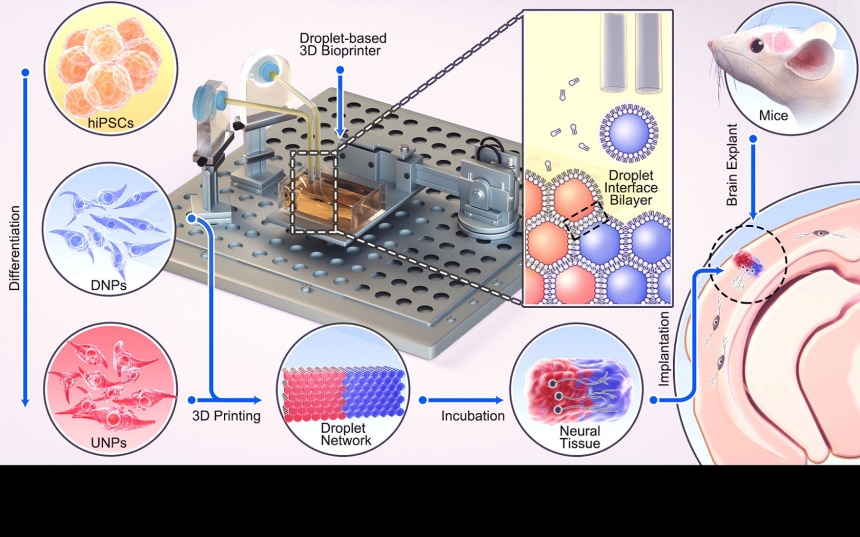
This visualization represents 3D-printed cerebral cortical tissue inside a mouse brain slice. The fluorescent red and blue biomarkers show the implanted neural cells. (Image Credit: Yongcheng Jin, University of Oxford)
University of Oxford researchers made an interesting breakthrough: 3D-printing human neural stem cells to replicate the human brain’s cerebral cortex architecture. It has the potential to repair damage in that region of the brain that causes speech, movement, and cognition problems. Unfortunately, treatments for severe cases do not exist, affecting a patient’s quality of life.
The team started this off by using human induced pluripotent stem cells (hiPSCs) --- sourced from the patient’s brain cells. This technique decreases an immune response risk. They then differentiated the hiPSCs into neural progenitor cells for the cerebral cortex’s two layers. Those cells were also placed within a solution to create two bio-inks that were printed to form a double-layered structure of brain tissue.

Droplets with the hIPSC-derived neural progenitors underwent 3D printing to create two-layer cerebral cortical tissue. (Image Credit: Yongcheng Jin, University of Oxford)
After implanting the cells into mouse brain slices, they exhibited structural and functional integration with the host tissue. This was indicated by the “projection of neural processes and the migration of neurons across the implant-host boundary.” Additionally, the cells had signal activity that correlated to the host cells. What this means is that the human and mouse cells communicate with each other, showing functional and structural integration.
Now, the team wants to improve their droplet printing technique to form complex multi-layered cerebral cortex tissues that replicate the human brain’s architecture. Other than treating brain injuries, these tissues could be used for brain development studies, drug evaluation, and to help researchers better understand the basis of cognition.
“Our droplet printing technique provides a means to engineer living 3D tissues with desired architectures, which brings us closer to the creation of personalized implantation treatments for brain injury,” says senior author Dr. Linna Zhou (Department of Chemistry, University of Oxford).
Have a story tip? Message me at: http://twitter.com/Cabe_Atwell
